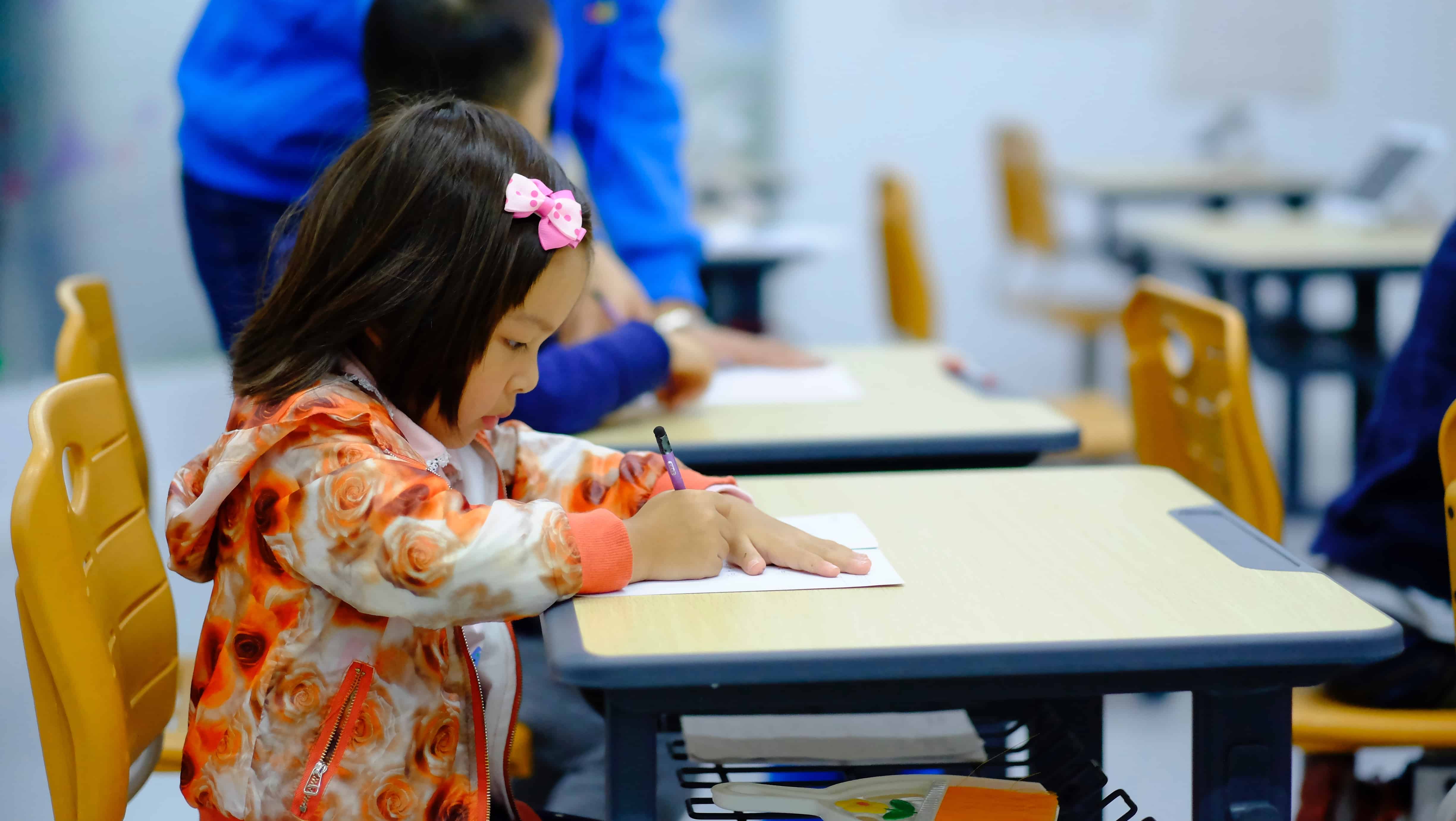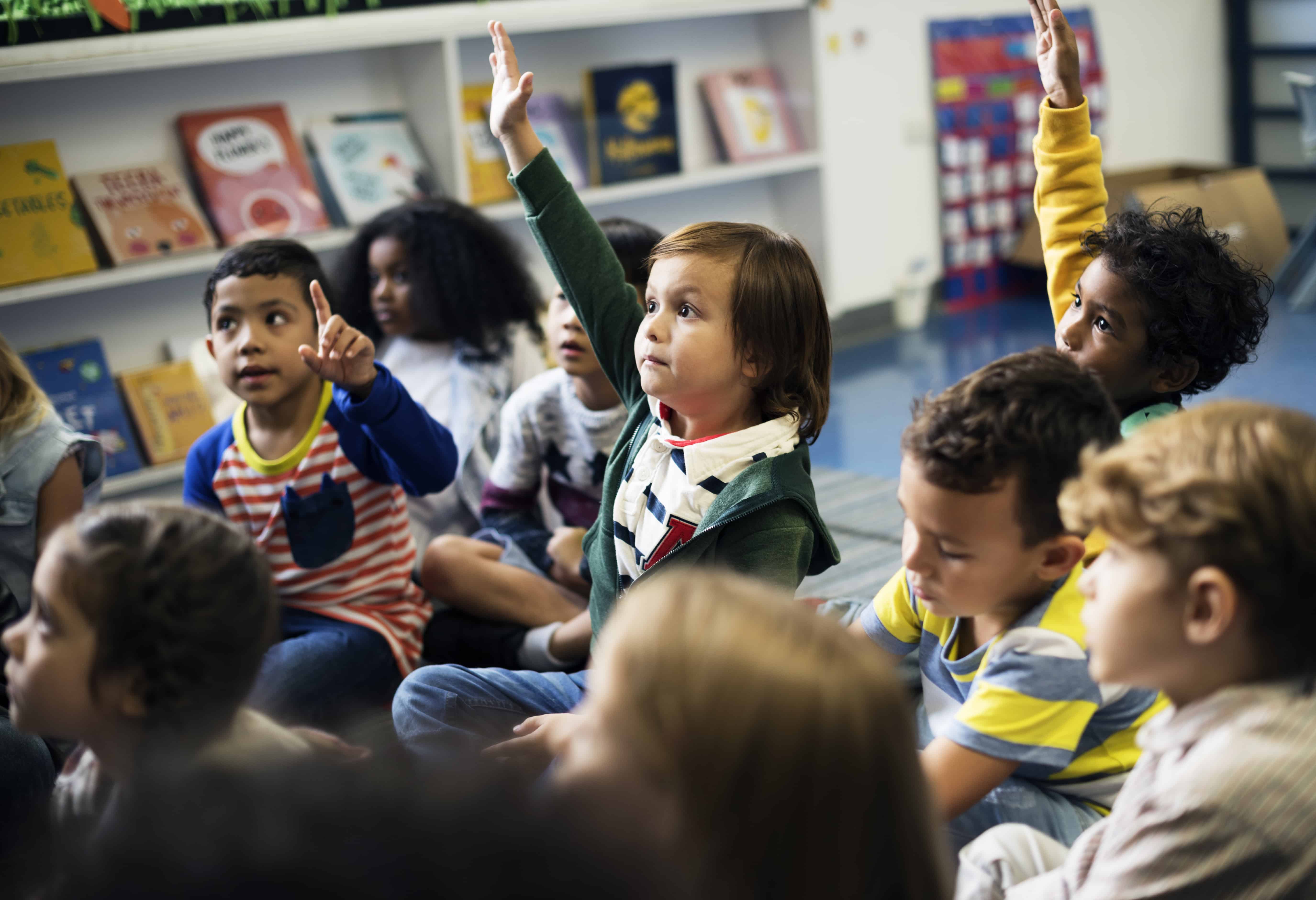In his book A Celebration of Neurons: An Educator’s Guide to the Human Brain, educational researcher Robert Sylwester wrote, “The human brain is the best-organized, most functional three pounds of matter in the known universe.” [3]
We cannot afford to underestimate our students’ academic potential. A child’s brain is capable of learning and growth that, if nurtured, can affect the trajectory of their entire academic career, and beyond. Brain-based learning can be one of the best ways to help kids reach their potential.
But what is brain-based learning, and how can it impact your school? Read more about brain-based learning, including various benefits. Then, discover five ways you can use scientific research to engage students.
What is Brain-Based Learning?
Rather than a concrete theory, brain-based learning is more of an educational mindset. In a nutshell, brain-based learning can be defined as all learning theories in education that use research from the following fields as their basis:
- Psychology
- Neuroscience
- Technology
 In other words, strategies that fall under the brain-based learning umbrella include anything developed to align with the way our brains naturally learn.[6] There’s no one set theory that encompasses brain-based learning, so the breadth of it all can feel daunting. However, it also means that anything you do to stay on top of educational science and bring it to the classroom contributes to the use of brain-based learning with your students.
In other words, strategies that fall under the brain-based learning umbrella include anything developed to align with the way our brains naturally learn.[6] There’s no one set theory that encompasses brain-based learning, so the breadth of it all can feel daunting. However, it also means that anything you do to stay on top of educational science and bring it to the classroom contributes to the use of brain-based learning with your students.
How can you get started with brain-based learning? Because new research is always coming out, it’s important to intentionally look out for new ideas in the educational world. You might try reading educational journals, discussing strategies with your colleagues, or attending teacher conferences. Once you discover a new brain-based learning strategy, test it out with your students to see whether it works for your classroom.
Keep in mind, however, that since no two students’ minds are alike, some strategies may work for certain students better than others.[4] If you read up on a research-based theory but find that it doesn’t fit your students’ needs, don’t worry! As long as you’re making an effort to discover and use educational research to help your students, you’re using the spirit of brain-based learning in your classroom.
The Educational Benefits of Brain-Based Learning
 Why put in the effort to research brain-based curriculum and use it in your classroom? The benefits are both clear and significant. Not only can brain-based learning boost your students’ academic progress, but it can even improve classroom behavior and promote a positive learning environment in school.
Why put in the effort to research brain-based curriculum and use it in your classroom? The benefits are both clear and significant. Not only can brain-based learning boost your students’ academic progress, but it can even improve classroom behavior and promote a positive learning environment in school.
On the superficial, grades-based level, using psychological or scientific theories of learning can have profound benefits. Researchers found, for example, that teachers who implement brain-based learning often see both increased knowledge retention and academic performance.[7] Not only do students score higher on test scores, but they also remember the skills they’ve learned and can use them beyond the classroom.
Brain-based learning can also affect social-emotional development, or a student’s ability to understand and regulate their emotions. Studies have found that brain-based learning strategies can improve a student’s motivation and attitude.[10] When students develop an intrinsic love of learning and approach class with the right mindset, your entire class will be better prepared for a successful school career.
Ultimately, this is the goal of brain-based learning: to create a learning environment and classroom strategy where all students can thrive.[9] Because the scientific and psychological fields are always evolving, however, take each strategy with a grain of salt.[2] You may need to try a few different theories or strategies before you find those that best align with your classroom needs.
Learning Strategies Compatible with Brain-Based Learning
Now that you understand what brain-based learning is and how it can work, it’s time to discover some active learning strategies based on scientific research. These four learning strategies are just a few examples of how brain-based learning can work within well-known learning theories. Read up on the ones that interest you, then test them out to determine whether they work well with your class.
 Multisensory learning, for example, is a learning theory that uses neuroscience to reach students.[7] By engaging multiple senses in your lessons, like touch or sound, students may be more likely to understand and retain information. This strategy can be particularly useful for students with learning disabilities, such as dyslexia.[16]
Multisensory learning, for example, is a learning theory that uses neuroscience to reach students.[7] By engaging multiple senses in your lessons, like touch or sound, students may be more likely to understand and retain information. This strategy can be particularly useful for students with learning disabilities, such as dyslexia.[16]
As mentioned earlier, brain-based learning also aligns with social-emotional learning (SEL).[7] SEL refers to the way a student learns how to manage their thoughts, feelings, and actions. If you teach students these management skills in class, you can help them approach challenges inside and outside of school with a healthy attitude.
An older and generally respected learning theory in the educational field is multiple intelligences. As with the mindset of brain-based learning, multiple intelligences theory helps teachers remember that every child’s brain is different and may respond better to certain activities.[11] Because multiple intelligences is still undergoing research, however, this is best used as a classroom management strategy and not as a neuroscientific fact.
Finally, experiential learning (also known as “hands-on” learning) is another strategy developed using cognitive research.[12] This strategy encourages students to put concepts they learn in class to the test and both practice and reflect on them. This can help students develop critical thinking skills that extend far beyond a single lesson.
5 Tips to Model Your Curriculum After How Children Learn
Brain-based learning is one of the best ways to help students get the most out of their education. When you plan with your students’ brain in mind, you can put together lessons and activities that reflect how their brains work.
Keep these five tips in mind when you’re planning brain-based learning activities for your kids in class:
- Brain-based learning is not only theoretical but practical, too. Model your assignments in ways that mirror challenges students may face in real life.[15]
- Keep in mind that brain-based learning also encompasses social-emotional development.[7] Plan lessons that teach students social and team-building skills.
- A child’s learning environment can enhance or impair their academic achievement. Avoid creating lessons or situations that make students feel overly anxious, threatened, or helpless.[7]
- Lessons shouldn’t just involve memorizing words or facts. Use activities and lessons to help students learn how to problem solve and develop critical thinking skills that will benefit them for their entire academic career.[13]
- Not every brain-based learning strategy will be a good fit for your students. Try out a variety of different strategies to find the best ones for your class.[14]
Sources:
- Caine, R.N., and Caine, G. Understanding a Brain-Based Approach to Learning and Teaching. Retrieved from semanticscholar.org: https://pdfs.semanticscholar.org/8d58/b6af940e0117fcd4f52ef7e73e16690261f5.pdf.
- Jensen, E. Brain-based Learning: A Reality Check. Educational Leadership, April 2000, 57(7), pp. 76-80.
Concordia University-Portland Room 241 Team. Explanation of Brain Based Learning. Retrieved from cu-portland.edu: https://education.cu-portland.edu/blog/classroom-resources/brain-based-learning-explained/ [1] - Kaufman, E.K., Robinson, S.J., Bellah, K.A., Akers, C., Haase-Wittler, P., and Martindale, L. Engaging Students with Brain-Based Learning. Retrieved from researchgate.net: https://www.researchgate.net/profile/Eric_Kaufman/publication/253117676_Engaging_Students_with_Brain-Based_Learning/links/5454366d0cf26d5090a5593d.pdf.
- Connell, J.D. The Global Aspects of Brain-Based Learning. Educational Horizons, Fall 2009, 88(1), pp. 28-39.
- Ozden, M., and Gultekin, M. The Effects of Brain-Based Learning on Academic Achievement and Retention of Knowledge in Science Course. Electronic Journal of Science Education, 2008, 12(1), pp. 2078-2103.
- Clemons, S.A. Brain-Based Learning: Possible Implications for Online Instruction. Retrieved from mass.edu: https://www.middlesex.mass.edu/ace/downloads/sept05bb.pdf.
- Edelenbosch, R., Kupper, F., Krabbendam, L., Broerse, J. Brain‐Based Learning and Educational Neuroscience: Boundary Work. Mind, Brain, and Education, March 2015, 9(1), pp. 40-49.
- Prigge, D.J. Promote Brain-Based Teaching and Learning. Intervention in School and Clinic, March 2002, 37(4), pp. 237-241.
- Akyurek, E., and Afacan, O. Effects of Brain-Based Learning Approach on Students’ Motivation and Attitudes Levels in Science Class. Mevlana International Journal of Education, April 2013, 3(1), pp. 104-119.
- Edutopia Staff. Multiple Intelligences: What Does the Research Say? Retrieved from edutopia.org: https://www.edutopia.org/multiple-intelligences-research.
- Kolb, A.Y., and Kolb, D.A. The Learning Way: Meta-cognitive Aspects of Experiential Learning. Simulation & Gaming, 2009, 40(3), pp. 297-327.
- Hmelo-Silver, C.E. Problem-Based Learning: What and How Do Students Learn? Educational Psychology Review, September 2004, 16(3), pp. 235-266.
- Kiewra, K.A. How Classroom Teachers Can Help Students Learn and Teach Them How to Learn. Theory Into Practice, 2002, 41(2), pp. 71-80.
NME Foundation. How Do Today’s Students Learn? Retrieved from nmefoundation.org: https://www.nmefoundation.org/getmedia/4e11f2e3-e934-4184-b92d-a2526ba56562/nessc-briefing-how-do-students-learn?ext=.pdf - International Dyslexia Association. Multisensory Structured Language Teaching Fact Sheet. Retrieved from dyslexiaida.org: https://dyslexiaida.org/multisensory-structured-language-teaching-fact-sheet/.

